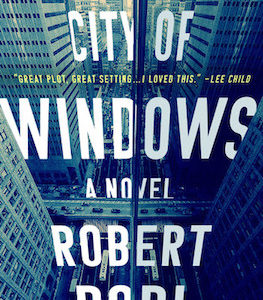From terrifying to tragic, the city of Boston provides plenty of headline-grabbing examples of true crime to profile or to inspire fiction. Here are some of the more infamous, organized by decade.
1960s—The Boston Strangler
From 1962 to 1964, thirteen women in the Boston area were killed in their homes, most of them strangled and sexually assaulted. Little to no evidence of forced entry was found on the crime sites, leading police to believe that the perpetrator was some type of service person. Ultimately the killer earned the moniker of the Boston Stranger. Maybe because this was the ‘60s, the attorney general of Massachusetts had the great idea of bringing in a parapsychologist to consult on the case, one who provided all sorts of incorrect information. Ultimately, police identified Albert DeSalvo as the killer. Despite DeSalvo’s confession and description of details unreleased to the public, theories abound to this day that more than one person committed the murders.
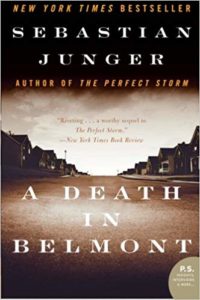
Book of note: A Death in Belmont by Sebastian Junger, takes a view of the Boston Strangler through the lens of Junger’s personal experience with DeSalvo.
1970s—Whitey Bulger
This is a story practically everyone knows—crime boss and FBI informant uses his corrupt handler to keep his own criminal interests running, and then hightails it when everything begins to unravel—and honestly, Whitey had such a hold on the city of Boston that he could be featured in any of these decades. I chose the ‘70s because I like to imagine him with muttonchops and bellbottoms. Whitey famously went on the run with his girlfriend Catherine Grieg, though many people don’t know that Greig was his second choice of coconspirator. He began life as a fugitive with his common-law wife, Theresa Stanley, who decided a few weeks in that the lam wasn’t for her. Whitey returned to Boston and swapped wife for girlfriend, then headed out again. Too bad for him because Greig’s addiction to exceptional dental hygiene—she had her teeth cleaned once a month, even on the lam – helped the FBI identify and capture the couple. Whitey died in prison in 2018, but Greig should be eligible of parole and teeth cleaning in 2020.
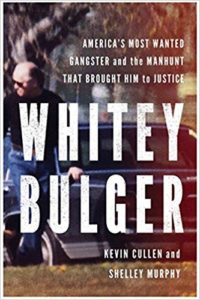
Book of note: There are tons of books and movies inspired by Whitey Bulger, but my favorite is Whitey Bulger: America’s Most Wanted Gangster and the Manhunt That Brought Him to Justice by Boston Globe reporters Kevin Cullen and Shelley Murphy, which simply follows the fascinating story from beginning to end.
1980s—Charles Stuart
On October 23, 1989, Charles Stuart and his pregnant wife Carol drove through Boston’s Roxbury neighborhood on their way to a birthing class. Maybe because this was the ‘80s, Stuart both worked as the general manager of a Newbury Street-based furrier and had a car phone. He later claimed that while stopped at a red light, a black man with a “raspy voice” forced his way into their car and made Stuart drive to Mission Hill, where that black man shot Carol in the head, and Stuart in the stomach. Stuart used the aforementioned car phone to call the police as he fled the supposed attacker.
One thing that Stuart could not possibly have predicted was that reality television was barreling toward all of us. Coincidentally, the CBS series Rescue 911 was filming that night with Boston Emergency Medical Services and managed to capture dramatic footage of the very pregnant Carol being wheeled out of the car, which helped turn the case into a national sensation. She died hours later. The Boston police began questioning innocent black men based on Stuart’s description, and even arrested a suspect. Of course, it turned out that Stuart had shot his wife himself in order to collect insurance money (he used $16k to buy a brand new Nissan) and when his story came undone, he committed suicide.
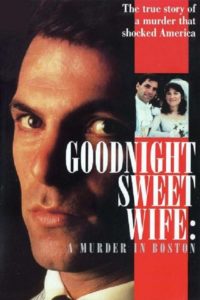
Books of note: Honestly, I couldn’t find one, but the 1990 TV-movie Goodnight, Sweet Wife: A Murder in Boston, starring Ken Olin (Thirtysomething) as Charles Stuart looks like it captures the era. Drop me a note if you have a copy!
1990s—Isabella Stewart Gardner heist
One of the most infamous art heists in history happened on March 18, 1990, at the Isabella Stewart Gardner Museum in Boston. In the early hours of the morning, security guards admitted two men disguised as police officers. Once inside, they tied up the security guards and stole over $500 million worth of fine art, including a rare Vermeer, by cutting the paintings out of their frames and rolling them up (a big no-no). In the years since, boundless theories have connected the heist to none-other-than Whitey Bulger, among other gangsters. Because of a stipulation in Gardner’s will, visitors to the museum today see empty frames hanging on the walls, a poignant reminder of what was once there.

Book of note: Charlesgate Confidential by Scott von Doviak takes a look at Boston in three years, 1948, 1986, and 2013, and examines a crime very similar to the Gardner heist, though von Doviak moves the actual crime to 1948. He also brings in the Charlesgate, a fascinating building with a long and varied history, and works in details of three important years in Red Sox history. A great read!
2000s—Clark Rockefeller
Christian Gerhartsreiter, a German national, went by many names, including Christopher Chichester, Christopher Crowe, and his most famous alias, Clark Rockefeller. As Rockefeller, Gerhartsreiter met and married Sandra Boss, an executive at McKinsey, and they had a child. He was so convincing as a Rockefeller that friends and neighbors believed he was a Yale alum, and he even joined Boston’s elite Algonquin Club. Like many serial criminals, though, he couldn’t overcome being a jerk, and when Boss divorced him, his story began to come apart. In 2008, during a supervised visit with his daughter, he managed to ditch a social worker and flee the state. The story made national headlines, and when Gerhartsreiter was captured, the authorities connected him to a decades’ old murder of a couple, Jonathan and Linda Souhas, in California.

Book of note: Schroder, A Novel by Amity Gaige follows an East German refugee who comes to the United States and passes himself off as a Kennedy.
(My own first novel, Little Comfort, sprung from the Clark Rockefeller case. You can read more about the creative process that led to the novel here.
2010s—The Boston Marathon bombers
The Boston Marathon is one of the biggest celebrations of the year, one that brings people together as we cheer the runners on. That’s not how the day ended on April 15, 2013, when two homemade bombs exploded near the finish line, killing three people and injuring hundreds. Two brothers, Dzhokhar Tsarnaev and Tamerlan Tsarnaev, were soon identified as suspects, and the resulting standoff and manhunt resulted in the death of a MIT police officer and one of the suspects, Dzhokhar. Tamerlan was ultimately captured in Watertown after the area was placed on lockdown. The community watched the events unfold in real time from the safety of homes and bars, and the term “Shelter in Place,” was introduced to many of us for the first time.
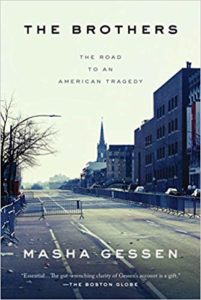
Book of note: In The Brothers, author Masha Gessen attempts to answer why two young men could make such terrible decisions.
Of course, the biggest crimes perpetrated in Boston have all been committed by Hollywood, as many have attempted and failed at the very famous and nearly impossible to mimic accent. Folks, you either have or you don’t!
















